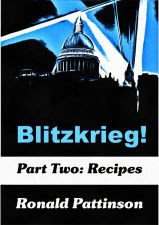Even more from J. C. Jacobsen's letter of 14th April 1869.
He's now writing about Scottish barley.
This is the barley that he asked his son to send from Scotland.
I have received today a letter with a bill of lading from Matthew & Theilmann for 40 quarters of barley, which have arrived and will hopefully be loaded tomorrow.- Before I close this letter tomorrow afternoon, I will tell you what I think of the barley. It will be hammered into shape the day after tomorrow and will be malted as slowly as possible with all care and then hidden away in one of the small chambers until the autumn I will not know the price until the next letter.
From later on in the letter, here's what he thought of the Scottish barley.
At this moment the first load of Scottish barley arrived, weighing 118 # [pound sign] Dutch, equivalent to 12 L.. 5 #[pound sign] Danish per Tdr, which is a good weight. The color is not as light as on your sample No1, but I do not attach any further importance to it, as the quality is extremely good.
He seemed pretty impressed with it. Though UK malting barley was generally considered pretty high quality.
There follows some personal stuff. Which seems to relate to a planned visit of Jacobsen senior amd his wife to the UK.
Now we could probably expect your friend Halkjer to come home soon. You have asked him to visit us, haven't you? Is he going home to Copenhagen right now? Will Stegmann come here before June? In that case, ask him to visit us. He naturally knows nothing about the planned trip? - Your mother has at the same time talked about visiting Jutland in the summer; yes, she even mentioned yesterday that she wanted to visit Hanne Gade in Christiania. Fortunately, she knows nothing and will not know anything until 14 days before I see that I can get ready. I should perhaps not talk about it until 8 days before the trip, as we could easily be ready to travel by that time. But I am afraid that it will inadvertently slip out of me prematurely, as I have difficulty in keeping it hidden from everyone who daily occupies my thoughts more and more.
Clearly, Jacobsen senior was keeping the trip as a surprise for his wife. Which is quite sweet.
I would like to brush up on my English a little, but I have not been able to get much time for it yet, as I do not want to interrupt my French exercises and in any case have to run the English ones in secret. But it will go well and I trust that you can at least be my interpreter. When you have practice conversing with prima donnas, you must by all means become proficient in the language! How is your stammering in England? Miss Pfeil replied the other day, when your mother asked her about it, that there was some stammering in your pronunciation last year when you visited her in Paris. I have had much pleasure in her development. She has displayed an uncommon talent as a dramatic artist, both in "The Jewess" and now recently in "The Huguenots," and she has a, by our standards, magnificent voice with a pleasant sound and great mastery over its expressive use. She has also won much recognition from the public, although her pronunciation of the consonants still leaves much to be desired, but she has a serious will to correct the deficiencies.
Who was Miss Pfeil? She seems to have been an actress of some sort. What was her connection with the Jacobsens? I wonder how bad Jacobsen junior's stammering was?


























































































